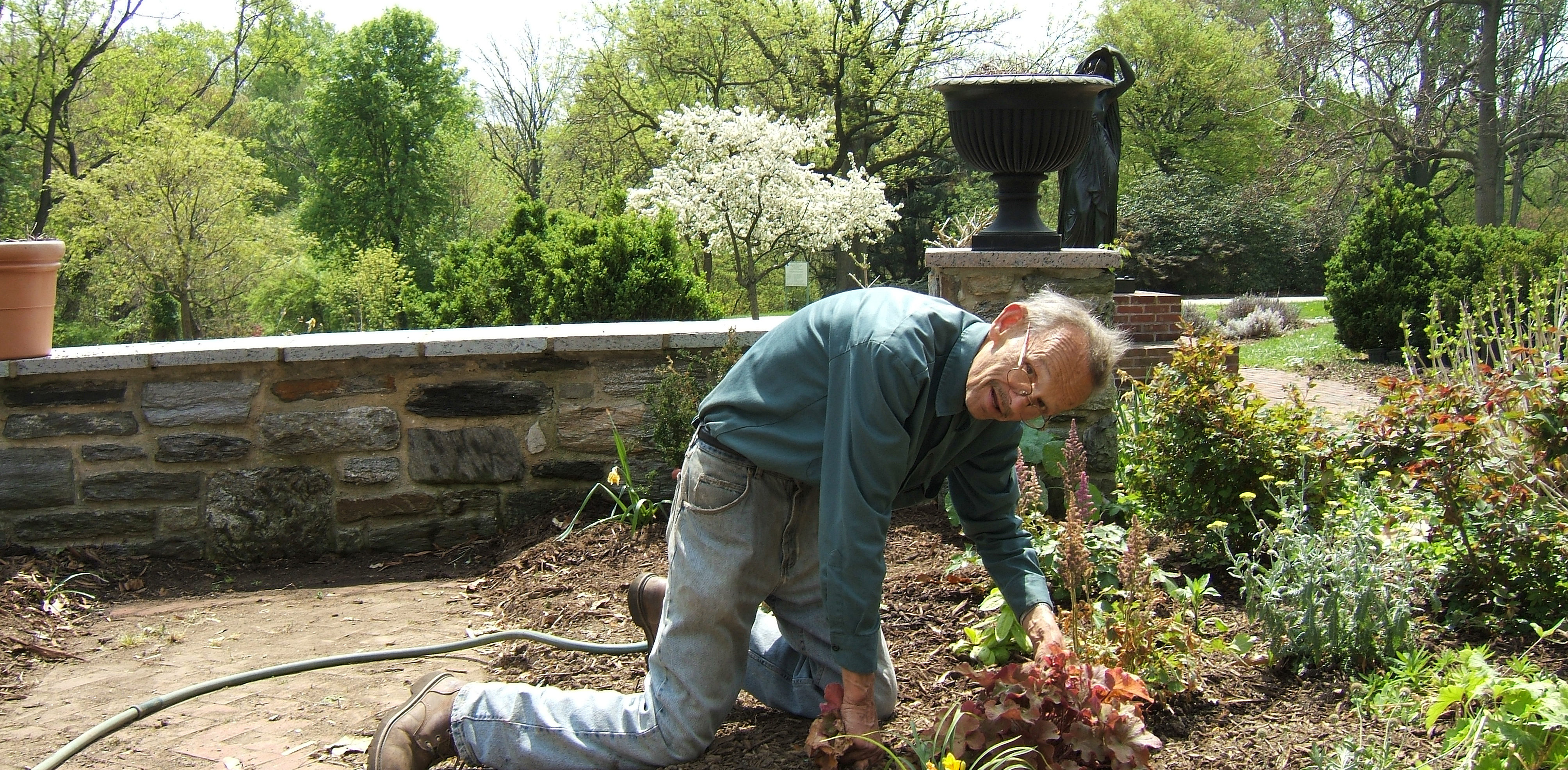The Servant Leader is a Gardener
You might never have thought of Christian leadership like this: being a servant leader modelled on Christ is much like being a gardener. Pondering the relationship between the gardener and his garden can provide us with some excellent insights into how to be a Christ-centered servant leader.
For the Christian, Jesus is the ultimate model of leadership and as members of his body, in order to be the leaders that we are called to be, there really is only one way to go. That is to follow his lead and be leaders in his style, just as he taught his disciples to be. You can gain an overview of Christ-centred servant leadership here Jesus: The Role Model for Christian Leaders
“The Servant Leader’s Garden” is a short series of articles adapted from a paper published by Dr. Thorsten Grahn. If you are a budding servant leader this series will provide you with food for thought about how you lead and how Christ-like is your leadership style. It will also provide you with a healthy challenge if your leadership style is based on one of the many secular models, even if it has been Christianised.
The Garden
The Britannica online dictionary defines “garden” as “a plot of ground where herbs, fruits, flowers, vegetables, or trees are cultivated.”, and “gardening” as “Laying out and tending a garden”. This definition covers a wide range of garden types, like a small garden in the backyard of a private home, a rose garden, a large recreational public garden, and even the biblical garden of Eden.
In many aspects, the task of the gardener in a garden is similar to the task of a servant leader in an organization. Both will study the environment, define a specific purpose, prepare a place that is conducive for growth, get the right plants/people in to be able to fulfil the purpose, and tend to the individual plants/people to help them grow and bear fruit. A garden is made up of single plants and much additional insight can be gained from considering the role of a single plant – or even parts of a plant – in the garden, and applying those insights to the role of a leader in an organization.
Every Christian leader can also be considered to be a plant (e.g., a “tree” as in Psalm 1) or a part of a plant (e.g., a vine branch in John 15) in God’s worldwide garden.
Naturally, the central theme of a garden is the growth of its plants. The gardener’s main concerns are when each plant grows, how fast it grows, in which soil it grows, how much water and sun it needs, what it produces, what stimulates or hinders its growth, how the growth of neighbouring plants affect each other, and so on.
As in the garden, in servant leadership the central theme is the growth of the individual parts, the people. This focus on the growth of the individual, and not primarily on the growth of the organization, is a unique characteristic of servant leadership. See Jesus: The Role Model for Christian Leaders
The Bible passage in John 15:1-8 is one of most obvious connections between the garden metaphor and biblical servant leadership. Here Jesus applies the garden metaphor to Christian leadership, with his father as the gardener whose concern is the fruit born by the branches. Most of the gardening analogies in the “The Servant Leader’s Garden” series directly relate to the servant leader’s focus on personal growth and on the growth of those being served.
Grass Doesn’t Grow Faster if You Pull It
An African proverb goes, “Grass does not grow faster if you pull it”.
Trying to make grass grow by pulling its blades kills the grass. First, the blade extends a little, especially if it is fresh grass, but by pulling a little harder, it tears off. It does not grow, instead it dies.
The same happens whenever the leadership of an organization tries to put pressure on people to make them grow. It finally kills the people; it kills their motivation, their health, and sometimes even takes lives. Sustainable personal growth needs personal commitment and inner motivation. The leadership can only create a healthy environment to support the individual’s growth process by providing encouragement, vision and training, but leadership cannot force people to grow. It needs intrinsic motivation to ensure continuous healthy growth according to the individual’s strengths, skills and gifts.
Kouzes and Posner observe that “For the servant leader, the main reason for leading is to help other people win”; helping people to win means helping them to grow. That is not possible by pulling or pushing, but only by encouraging their heart, enabling them to act and praying for them, as Jesus did. Isa 42:3 says of the coming Christ “A bruised reed he will not break”. Instead, Jesus Christ, the ultimate servant leader, came to heal human brokenness. Trying to heal hurt and broken people, and bringing them back to healthy growth, is an outcome of the servant leader’s commitment to the growth of his followers.
Right Placement Turns Weeds into Roses
Every plant that grows in a place where it is not wanted is a weed. In a vegetable patch, roses are weeds. However, in most other parts of garden, roses are considered beautiful flowers.
Organisationally, sometimes what differentiates a poor achiever from a high achiever is only the person’s placement in the organisation.
One of the five key principles of servant leadership is to arrange each person in a team or in a business such that everyone contributes according to their strengths. Right placement is especially important when working with those who have high potential. Leaders have to create an environment in which they can thrive, otherwise, if they are put in the wrong place, they can cause more problems than the average person. However, they can also become a greater asset if they are put in the right place, a place where they are not “weeds” but where they can thrive and prosper.
All this means that the servant leader needs to get to know both the potential of each of their people (plants) and the possible work places (soil) in order to develop the most fruitful combinations.
Successfully Growing Up Requires Growing Down Regularly
 The branches of the banyan tree send down aerial roots. When they reach the ground they take root. As the roots thicken and become strong they support the branches. The branches then grow out and send down more roots. And so the cycle repeats and the banyan tree is able to spread in amazing ways. Therefore, banyan trees have been called “trees that walk”. The Great Indian Banyan Tree is a single tree. It is over 250 years old, its canopy covers around 4 acres and has a circumference of about 1 Kilometer. The original trunk became diseased and was removed.
The branches of the banyan tree send down aerial roots. When they reach the ground they take root. As the roots thicken and become strong they support the branches. The branches then grow out and send down more roots. And so the cycle repeats and the banyan tree is able to spread in amazing ways. Therefore, banyan trees have been called “trees that walk”. The Great Indian Banyan Tree is a single tree. It is over 250 years old, its canopy covers around 4 acres and has a circumference of about 1 Kilometer. The original trunk became diseased and was removed.
A strong tree needs a strong root. What makes the banyan tree unique is that it is continually growing completely new roots, which are not extensions of existing roots. In this way it not only grows new branches and leaves and fruits, but also new roots. The new roots do not make the old ones obsolete, but they complement them and together they strengthen the tree and make it grow into new areas.
Growing deeper to grow bigger and expand the area of influence is a growth process for all members of an organization. Growing deeper includes ongoing learning, working on personal issues, which might be hidden to others but none the less affect them, and remaining in touch with one’s foundation of life.
A leader who wants to help others grow must grow as well because modelling is at the core of servant leadership. As the banyan tree grows step by step by building increasingly firm foundations, leaders must commit themselves to an ongoing process of growing deeper.
Stephen Covey comments “The path to greatness is a process of sequential growth from the inside out”. It is a process that requires going back to the roots regularly. Drawing on 1Peter 2:1-2 Buzzell contends that “Leaders are not qualified merely because they practice good deeds (although they must do that). They are qualified by possessing a passion and a craving for high spiritual qualities and exhibiting a consistent pattern of growth in those qualities”. To model the way and to grow consistently, based on firm spiritual and ethical foundations, is a sound basis for effective leadership. Christ-centred servant leaders trust in the Lord and grow deep roots in God. Such leaders are like trees planted by water. Jer 17:7-8:
But blessed is the man who trusts in the Lord, whose confidence is in Him. He will be like a tree planted by the water that sends out its roots by the stream. It does not fear when heat comes; its leaves are always green. It has no worries in a year of drought and never fails to bear fruit.
Reflection
So Christian leader, how does your garden grow? Here are some points to ponder?
- Is your focus the personal growth of your people? Is your goal to help them win? What are the needs of your people and what can you do to help them be more fruitful?
- Are any of your people hurting? It’s difficult to grow and bear good fruit in such circumstances. What can you do to help them heal?
- Have you any weeds in your garden? Would they become roses if they were placed elsewhere? What can you do to release them to achieve their full potential?
- Do you know the potential of each of your people? Could anyone be more fruitful in a different position?
- Are you modelling growth and with that increased fruitfulness? What can you do to develop your own personal growth?
- Are you nurturing your people that they may also grow, becoming deeper and broader in their capability?
You might also find this article of help Be The Best Christian Leader That You Can
Image: DanielFoster437 Flickr.com


